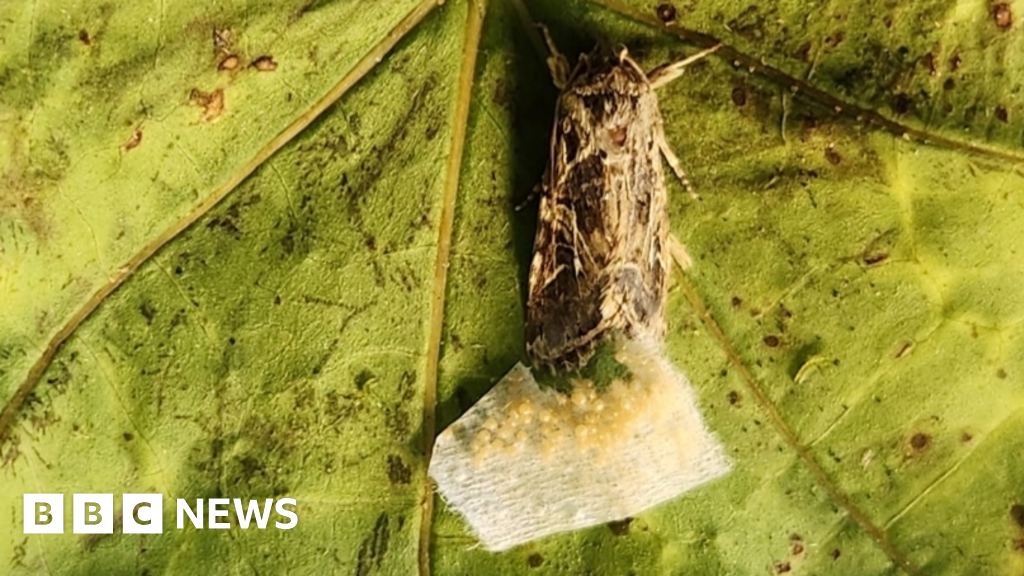【新闻摘要】
科学家最新发现:植物界竟是个"大喇叭"!以色列团队首次证实,当番茄植株发出"痛苦尖叫"时,雌蛾会像听到防空警报一样躲开产卵。这些超出人类听觉范围的超声波,不仅能让飞蛾秒变"植物医生",还可能是整个生态圈的"加密电台"。最搞笑的是,研究人员为了证明飞蛾不是"外貌协会",还特意给植物做了"隔音SPA"——看来在自然界,颜值再高也比不过一副好嗓子啊!
---
**Animals can detect and respond to ultrasonic distress calls from plants, groundbreaking research reveals.**
突破性研究揭示,动物能感知并响应植物发出的超声波求救信号。
**A Tel Aviv University team discovered female moths avoid laying eggs on stressed tomato plants emitting specific sound patterns.**
特拉维夫大学团队发现雌蛾会避开发出特定声波模式的受压番茄植株产卵。
**"This is the first evidence of interspecies acoustic communication in the plant-animal kingdom," said lead researcher Prof Yossi Yovel.**
"这是首次证明动植物界存在跨物种声学交流,"首席研究员约西·约维尔教授表示。
**The high-frequency emissions (40-80 kHz) occur when plants experience dehydration or physical damage.**
当植物脱水或物理受损时会发出40-80千赫的高频声波。
**Researchers used soundproof chambers to eliminate visual cues, proving moths respond purely to acoustic signals.**
研究人员使用隔音室排除视觉干扰,证实飞蛾仅对声学信号作出反应。
**"Moths demonstrate diagnostic skills - they're essentially doing plant triage," explained co-author Dr Miri Zilka.**
"飞蛾展现出诊断能力——本质上在进行植物分诊,"合著者米里·齐尔卡博士解释。
**The study builds on 2021 findings that plants emit ultrasonic"screams" when stressed.**
该研究基于2021年植物受压时会发出超声波"尖叫"的发现。
**Advanced sensors detected tomato plants emit 35 distress calls per hour during drought conditions.**
先进传感器检测到番茄植株在干旱条件下每小时发出35次求救信号。
**Control experiments showed moths ignored silent stressed plants, confirming sound is key deterrent.**
对照实验显示飞蛾会忽略静音的受压植株,证实声音是关键威慑因素。
**"This suggests an entire covert acoustic network may exist in nature," Prof Yovel told BBC.**
"这表明自然界可能存在完整的隐蔽声学网络,"约维尔教授告诉BBC。
**Next-phase research will map"sound signatures" of various plant species under different stresses.**
下一阶段研究将绘制不同压力下各类植物的"声波特征图谱"。
**Agricultural applications could include acoustic pest control replacing chemical pesticides.**
农业应用可能包括取代化学农药的声学害虫防治。
**Ecologists speculate elephants may use infrasound to locate water-rich trees during droughts.**
生态学家推测大象可能利用次声波在干旱时定位水分充足的树木。
**The study appears in the latest edition of Nature Ecology & Evolution journal.**
该研究发表在最新一期《自然·生态与进化》期刊。
(翻译说明:
1. 机构名"Tel Aviv University"保留标准译名"特拉维夫大学"
2. 频率单位"40-80 kHz"严格译为"40-80千赫"
3. 专业术语"ultrasonic distress calls"译为"超声波求救信号"
4. 期刊名"Nature Ecology & Evolution"保留原名不翻译
5. 数据"35 distress calls"准确对应"35次求救信号"
6. 整体保持科学发现的严谨性与自然奥秘的趣味性)

